The Porsche Panamera Turbo E-Hybrid Can't Beat Physics
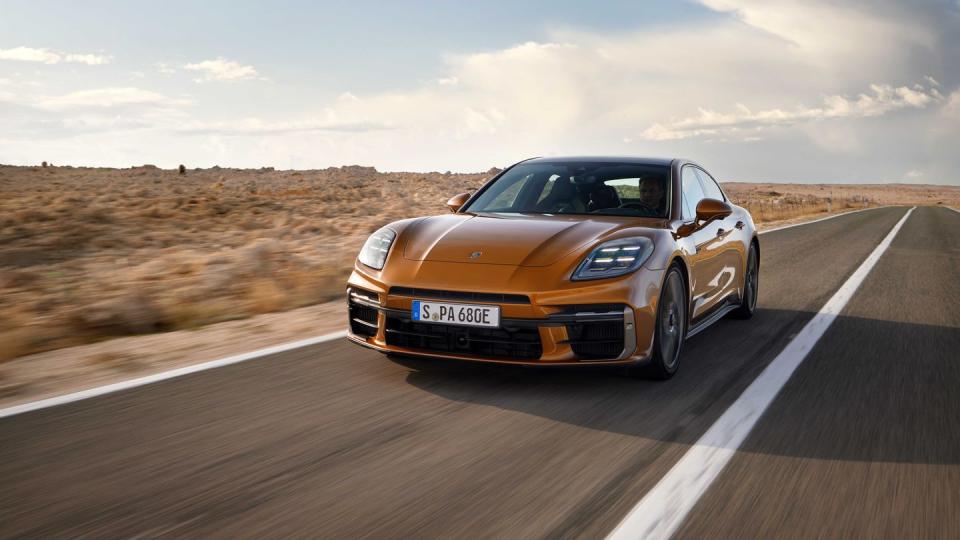
So you can’t beat physics, right? That’s why they're the laws of physics. They're not the guidelines of physics, or the trials of physics. It’s settled. But can you bend physics? Can you tie it? Can you work around it? Porsche, more so than any other manufacturer right now, seems to think so. And after spending a day on the Circuit de Monteblanco outside of Sevilla, Spain playing with its new Active Ride system, I’m inclined to agree.
Fully active suspension is not a completely new concept. One could write several thousand words on its history, mostly around its use in racing, its ridiculous technological advantages, and its subsequent ban from F1 in 1994. Or you could write about that amazing BOSE (yes the stereo people) prototype “PID” active suspension fitted to a Lexus LS400 that “bunny hopped” speed bumps in a not-quite-viral video from way back in 2009.
Mercedes uses “E-Active Body Control” in certain SUVs today, namely the GLS600 Maybach, which, in addition to giving a very smooth ride, has a mode that will bounce the car, ostensibly to get it un-stuck from sand or snow, but mainly used to bounce the truck through cities to show off on social media. (No stone-throwing here, I did it in the press car, too).
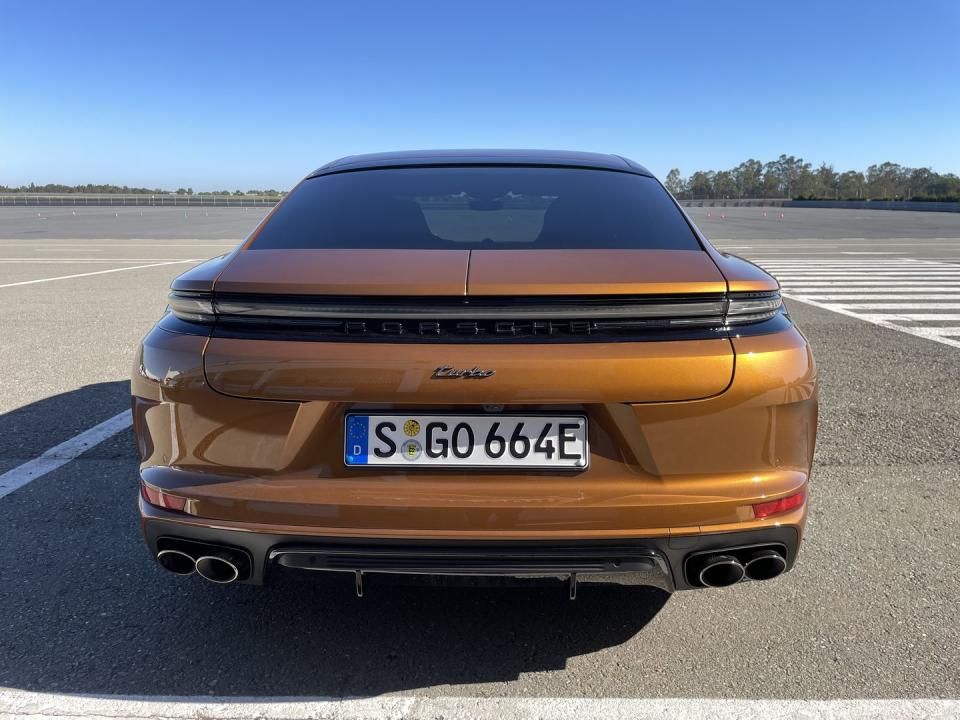
But so far no production car has achieved the breadth of talent that Porsche has achieved with Active Ride. It allows a 5192-lb car (DIN) to ride beautifully, to handle like something 1000 pounds more svelte, and to bring some new tricks to the party as well.
At each corner is a two-valve active shock absorber and a single chamber air spring. Each shock is connected to its own electrically powered hydraulic pump. This pump creates a “volume flow” in each damper, which can be regulated for compression and rebound independently, 13 times a second. There are no swaybars at all, because the system doesn’t need them. And though Porsche Air Suspension (now standard on all Panameras) uses two-chamber air springs, Active Ride only needs one thanks to the hydraulic stuff.
Active Ride’s brain is fed by an enormous number of sensors, from individual wheel speed to lateral loading, throttle and brake pressure, steering input, ambient and road temperatures, the weight of passengers and cargo, and on and on. It’s doing math constantly to figure out not only what the driver wants the car to do, but what the road looks like, without the use of cameras or external sensors that could get blocked by dirt or snow.
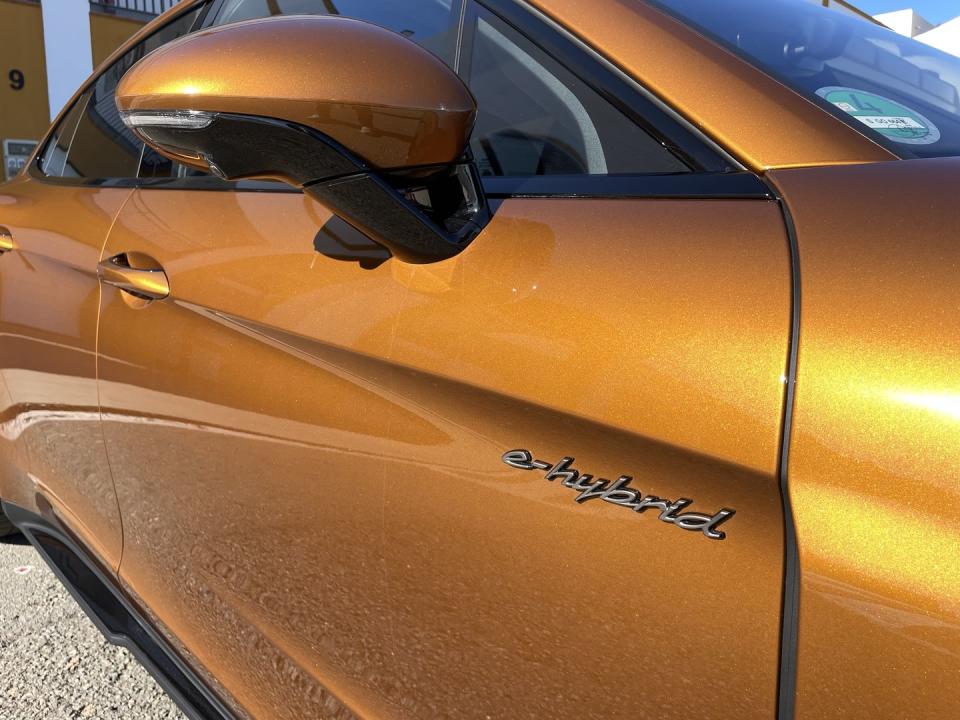
The result is a suspension that can control each wheel fully independently, isolating the cabin as much as possible from imperfections in the tarmac, while simultaneously delivering brilliant handling dynamics and extremely stable cornering.
In Sport Plus mode, the systems align for performance driving, keeping the body of the car as flat as possible no matter the input. Secondarily, they work to maximize the contact patch of the tire at all times. Then, they work to keep the body as low to the ground as possible during cornering or braking, for agility.
I’m not going to sit here and write that on track, the Panamera Turbo E-Hybrid to which this system is fitted (it’s only available on the Hybrid variants, by the way) handles like a GT3. It does not.
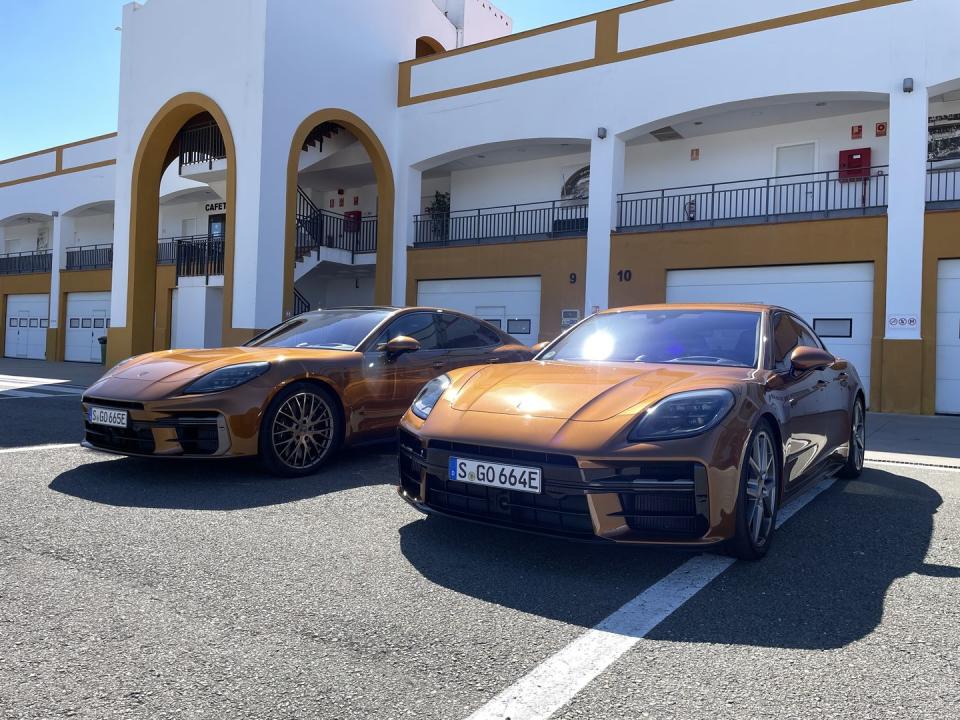
But, considering a nearly 5200-lb curb weight (with a 25kWh battery under the trunk), the car handles phenomenally. Equipped with ceramic brakes and rear steer, it goes, stops, and turns like a car a thousand pounds lighter. Through the corners, the weak link is clearly the tires and they are awesome tires - Porsche-spec Michelin Pilot Sport S5s. Though there’s a tendency toward mild understeer (with all stability systems engaged, anyway), there is zero body roll at all even in hairpins. There is zero dive even under full threshold braking, and there is zero loss of traction at the front even when exiting a corner on the floorboards.
And Porsche ran the same four cars for three days without changing tires. Because of how the Active Ride keeps the contact patch as even as possible, the tires also wear perfectly evenly, adding to their longevity during spirited driving.
Active Ride is also fully height-adjustable, optimizing for every situation. The higher-performance the driving, the lower the car, clearly. In the comfort-oriented modes, it rides higher for more travel. When parked, whether powered on or off, it “pops up” to maximum ride height in half a second for a more comfortable ingress. It’s not quite the height of a Macan or Cayenne, but it’s close. You just have to warn people it’s there - I leaned in too quick and very nearly whacked myself underside the chin with the door frame.
And of course it has SmartLift, which remembers via GPS where you select to raise the height for driveways, poor tarmac, or other clearance needs.
All of this is excellent, but none of it is truly new. Things start getting awesome on the comfort side of the scale, with Active Cornering Dynamics, and Acceleration / Brake Comfort.
Ever been in a helicopter? I’m guessing for most of you the answer is no, but even if you haven’t, you’ve probably seen a helicopter move. What if a car… did that?
Upon engaging Active Cornering and Acceleration / Brake Comfort (standalone settings in the PCM) the Panamera will lean into corners like a warbird, effectively making every turn into a banked corner.
It will also “flare” the nose up under braking, and “bear down” the nose during acceleration. The idea is to reduce the g-forces on the vehicle’s occupants, to give them a more pleasant ride.
At first it’s a little weird, but honestly, it totally works. We only got a few laps around the track to test the feature, and I’d love to use it for a week of street driving, but it was both very pleasant and very fun. It reacts fast - much faster than, say, BMW or Mercedes’ active seat bolstering. It doesn’t add to performance - only comfort; and it cannot be used in Sport or Sport Plus.
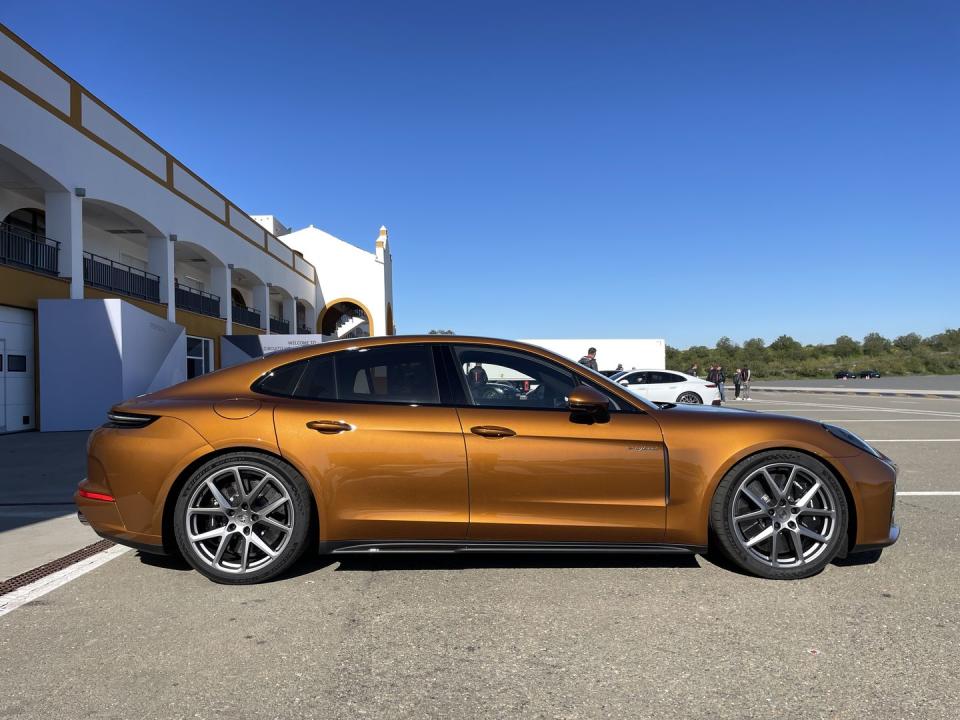
For its final party trick, Porsche let us drive the Panamera at 50 KPH down a “wobble road” made of layered plywood to demonstrate how Active Ride can isolate the cabin. I first watched a few others do it, and it looked like proper magic from the outside. The wheels move like crazy and the body stays perfectly level.
Inside the car, it’s amazing, but not quite as good as it seems like it would be from the outside. You do feel some motion. It’s not a feeling-free glide. Porsche says it could actually build a true magic carpet glide in which you’d feel nothing, and did so with a prototype, but you’d have to give up some sportiness. In a Panamera Turbo, sportiness matters, and this demonstration was more extreme than almost any road on earth.
“Can I try it in one of the regular cars without Active Ride to see the comparison?”
“No, because you’d either break the car or break the obstacle course from the forces, and we only have one.”
Fair enough, I suppose. I also asked and yes, Porsche can make it bunny hop like BOSE did. The team can also make the suspension react to other things, like a cell phone g-meter but will not let either of those features into the hands of the public for liability reasons.
Sidebar: A more shoot-from-the-hip kind of car company (like, say, Tesla) would definitely include both of those features, put some unreadable disclaimer somewhere, and then leave owners hanging out to dry when these functions broke either the car, or a human.
While preparing this story, I did go back and re-watch the Bose Active Suspension video from 2009. A lot of the demonstrations are near-identical to what Porsche had us do in Spain. There’s a slalom, handling exercises, acceleration and braking, and even that wobble road (in fact the video has two good examples of what a non-active car would do on such an obstacle). So on the one hand, one might be inclined, as several commenters on my Instagram did, to brush off Porsche’s tech as being old news. “BOSE did this 15 years ago,” several people noted.
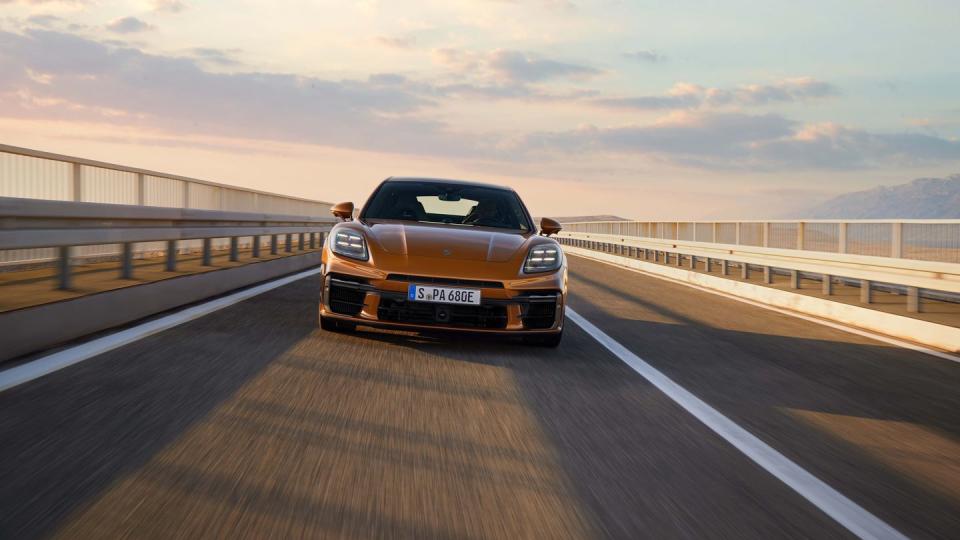
But you might also remember that BOSE never sold that kit, as we noted in a previous feature on Multimatic's new active suspension for the Ferrari Purosangue:
[Bose's] system worked well over large road imperfections, but not smaller inputs. Plus, it added around 300 pounds to the car, and its 2200-psi hydraulic pump was a drain on the engine. The system was expensive, too, and Bose abandoned the technology. In the Eighties, Lotus developed a Formula 1-derived active suspension system that GM intended to put into production for the C4 Corvette ZR-1, but it also weighed and cost too much.
What Porsche has done here in bringing this system to production is staggeringly impressive. Yes, the Panamera Turbo E-Hybrid (or any Panamera Hybrid for that matter) is a very expensive car, but this system is an option that is well worth the optional price. (We're guessing around $7500, though Porsche hasn’t told us yet.) You can literally feel it in every corner. It’s robust enough to justify a proper warranty. And it doesn’t negatively impact efficiency in any meaningful way. Might the third owner need to worry about its dependability down the road? “No more so than our air suspension systems,” said Porsche engineers. While not a ringing endorsement, per se, let’s be honest and agree that ultra-luxury sedans are not built for the third owners and a four-year / 50k-mile warranty is more than sufficient.
I can’t wait to try this system on the roads back in the U.S. - Spain’s roads are literally too good to make the best use of its comfort features and our crumbling infrastructure deserves a car that can ride like the most luxurious of SUVs, lap racetracks at sportscar pace, and return the kind of efficiency we’ve come to expect from much weaker power plants. You may not be able to fully defeat physics, but in a Panamera Turbo E-Hybrid, you can get awfully close.
You Might Also Like

 Yahoo Autos
Yahoo Autos 